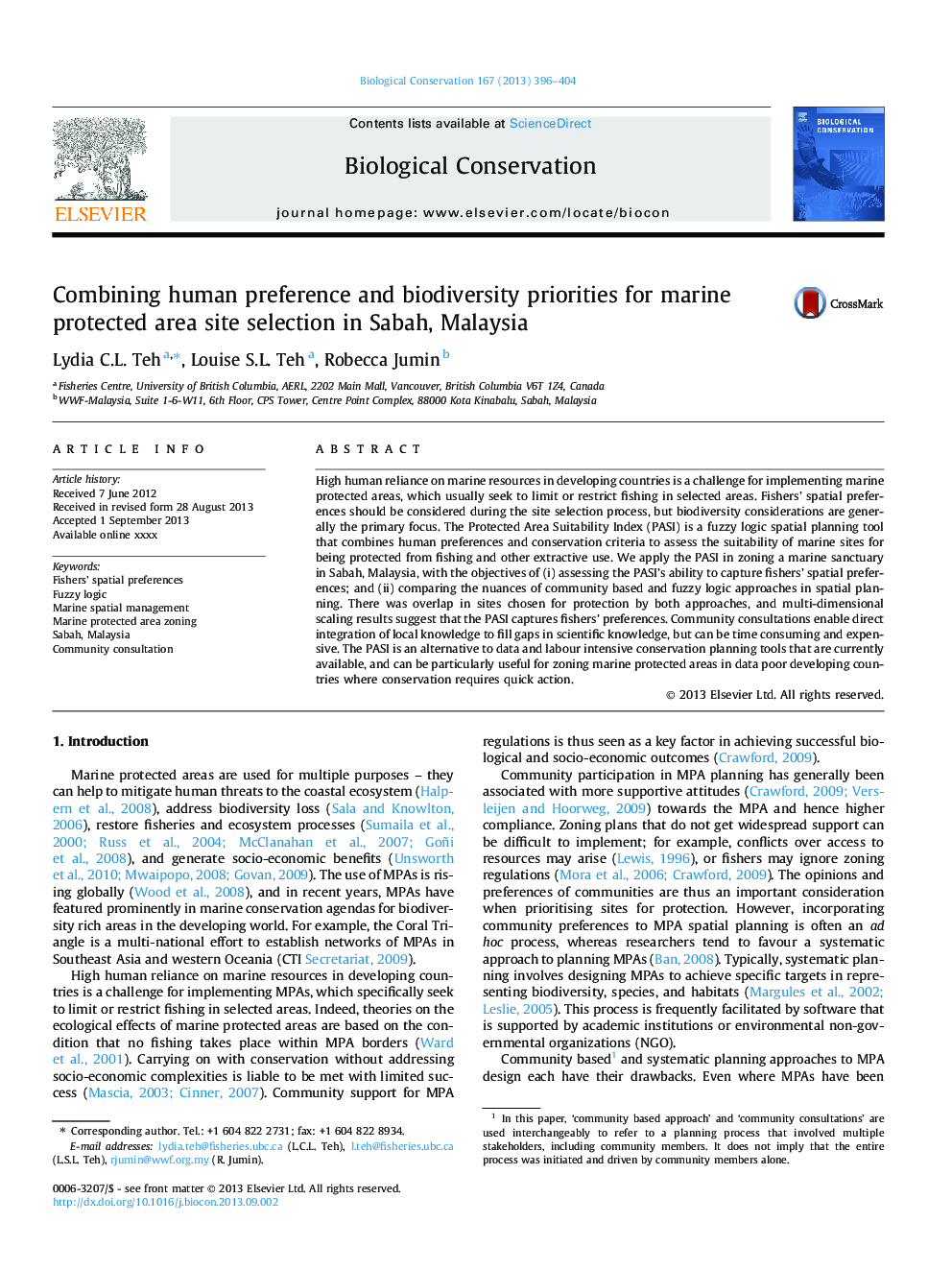| کد مقاله | کد نشریه | سال انتشار | مقاله انگلیسی | نسخه تمام متن |
|---|---|---|---|---|
| 6300659 | 1617934 | 2013 | 9 صفحه PDF | دانلود رایگان |
عنوان انگلیسی مقاله ISI
Combining human preference and biodiversity priorities for marine protected area site selection in Sabah, Malaysia
ترجمه فارسی عنوان
ترکیب اولویت های انسانی و اولویت های تنوع زیستی برای انتخاب سایت های حفاظت شده دریایی در صباح، مالزی
دانلود مقاله + سفارش ترجمه
دانلود مقاله ISI انگلیسی
رایگان برای ایرانیان
کلمات کلیدی
ماهیگیرها ترجیحات فضایی، منطق فازی، مدیریت فضایی دریایی، منطقه بندی منطقه حفاظت شده دریایی، صباح، مالزی، مشورت جامعه
موضوعات مرتبط
علوم زیستی و بیوفناوری
علوم کشاورزی و بیولوژیک
بوم شناسی، تکامل، رفتار و سامانه شناسی
چکیده انگلیسی
High human reliance on marine resources in developing countries is a challenge for implementing marine protected areas, which usually seek to limit or restrict fishing in selected areas. Fishers' spatial preferences should be considered during the site selection process, but biodiversity considerations are generally the primary focus. The Protected Area Suitability Index (PASI) is a fuzzy logic spatial planning tool that combines human preferences and conservation criteria to assess the suitability of marine sites for being protected from fishing and other extractive use. We apply the PASI in zoning a marine sanctuary in Sabah, Malaysia, with the objectives of (i) assessing the PASI's ability to capture fishers' spatial preferences; and (ii) comparing the nuances of community based and fuzzy logic approaches in spatial planning. There was overlap in sites chosen for protection by both approaches, and multi-dimensional scaling results suggest that the PASI captures fishers' preferences. Community consultations enable direct integration of local knowledge to fill gaps in scientific knowledge, but can be time consuming and expensive. The PASI is an alternative to data and labour intensive conservation planning tools that are currently available, and can be particularly useful for zoning marine protected areas in data poor developing countries where conservation requires quick action.
ناشر
Database: Elsevier - ScienceDirect (ساینس دایرکت)
Journal: Biological Conservation - Volume 167, November 2013, Pages 396-404
Journal: Biological Conservation - Volume 167, November 2013, Pages 396-404
نویسندگان
Lydia C.L. Teh, Louise S.L. Teh, Robecca Jumin,
